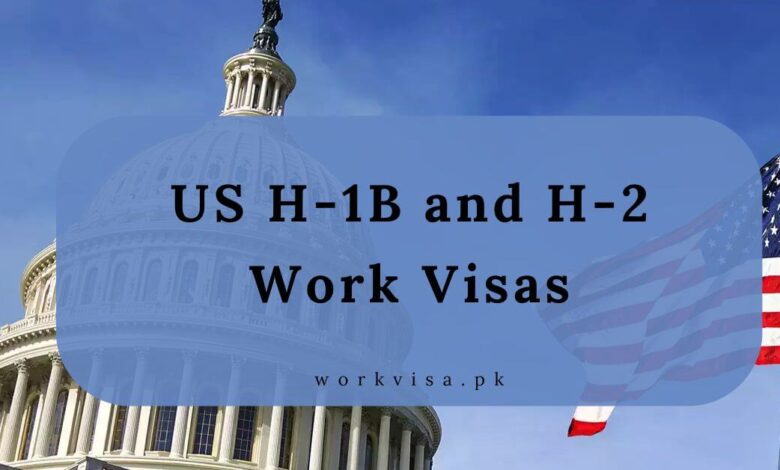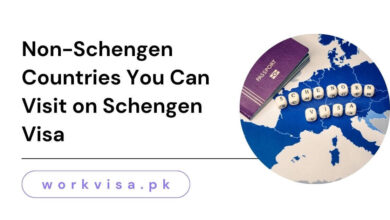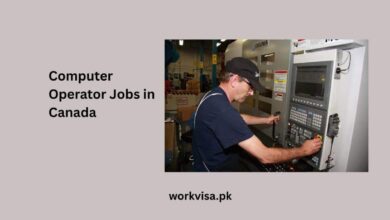US H-1B and H-2 Work Visas 2025 – Application Process

Have you overlooked the most recent updates regarding H-1B and H-2 visas? Employers and foreign workers equally are affected. The US work visa landscape has undergone a significant transformation, with a new digital registration system and an increase in STEM opportunities. Do not fall behind; continue reading to comprehend the primary modifications and their impact on your eligibility and application process.
Check Also: Visa Sponsorship Skilled Worker Jobs in USA
Benefits of US H-1B and H-2 Work Visas:
Benefits of H-1B Work Visa:
- Work Authorization in the United States: The H-1B visa enables foreign professionals to legally work and reside in the United States.
- Competitive Salaries: H-1B positions frequently provide significantly higher salaries, particularly in specialized disciplines such as medicine and technology.
- Pathway to Permanent Residency: Holders of an H-1B visa are eligible to petition for a Green Card, which provides long-term residence and employment opportunities in the United States.
- Dependents Are Allowed to Accompany You: The H-4 visa permits dependents (spouse and children under 21) to reside in the United States and occasionally pursue employment or education.
- Career Advancement: Possibilities to acquire valuable international experience and professional development by working in top-tier organizations and sectors.
- Validity Period: H-1B visas are initially granted for a period of three years, with the option to extend the duration to six years in order to ensure job stability.
- Global Networking: Your career prospects are significantly improved by the opportunity to establish connections with professionals from various countries while working in the United States.
- Diverse Employment Opportunities: Encompasses a broad spectrum of sectors, including finance, engineering, education, and healthcare, in addition to information technology and healthcare.
- Employer Sponsorship: The bulk of the visa application process is managed by the employer, which alleviates your administrative burden.
- Access to US Benefits: H-1B workers are entitled to a variety of employee benefits, including healthcare, retirement plans, and paid leave.
- Opportunity for Specialization: The United States provides a plethora of training programs and certifications that enable H-1B holders to further specialize in their field.
- Exposure to Cutting-Edge Technology: Numerous H-1B positions are located in industries that are at the forefront of innovation and technology, which will enhance your skills and knowledge.
- Family Education Benefits: Children on H-4 visas are eligible to attend US institutions, which provide them with access to world-class educational opportunities.
- Portability: H-1B visa holders have the ability to change employment by transferring their visa to a new employer, without the need to begin the process from scratch.
- Tax Benefits: Holders of H-1B visas are eligible for tax deductions and credits and are required to pay taxes in the United States.
Benefits of H-2 Work Visa:
- transitory Employment in the United States: H-2 visas enable foreign nationals to legally engage in transitory or seasonal employment in the United States.
- Guaranteed Job Offer: Prior to submitting an application for an H-2 visa, employers are required to obtain a job offer to guarantee employment upon arrival.
- Dependents Can Join: Family members (spouse and children) are eligible to apply for H-4 visas to accompany you during your stay. Dependents are permitted to participate.
- accommodation and Transportation: Employers are frequently obligated to provide free or subsidized accommodation and transportation for H-2A workers.
- No Degree Requirement: H-2 visas are more accessible to a wider spectrum of workers than H-1B visas, as they do not necessitate advanced educational qualifications.
- Processing Time: The H-2 visa application process is generally more expeditious than that of other US visa types.
- Work Experience: Provides valuable international work experience that can enhance your resume and open doors to future opportunities.
- Renewable Duration: H-2 visas are typically valid for the duration of the employment contract, which is typically up to one year. They can be renewed for a maximum of three years.
- Skill Development: Possibilities to acquire new skills and acquire practical experience in sectors such as agriculture, hospitality, and construction.
- Earnings Increase: Workers frequently receive higher salaries than they would in comparable positions in their countries of origin.
- Legal Protections: Holders of H-2 visas are entitled to equitable wages, working conditions, and overtime pay in accordance with United States labor laws.
- Return Travel Assistance: Employers are obligated to reimburse the costs of your return to your country of origin upon the conclusion of the employment agreement.
- Seasonal Opportunities: These opportunities are particularly well-suited for individuals who are in search of temporary employment, particularly in sectors such as agriculture, horticulture, and hospitality.
- Cultural Exchange: Working in the United States offers the opportunity to establish connections with individuals from a variety of origins and to become acquainted with a new culture.
- Path to Reapplication: The successful completion of an H-2 contract frequently facilitates the process of reapplying for comparable positions in the future.
Understanding the Purpose of H-1B Visa:
The H-1B visa is specifically intended to draw the attention of highly qualified professionals to the United States. It is used extensively by employers in industries that necessitate specialized expertise, including finance, healthcare, engineering, and information technology. Employers sponsor applicants for this visa by demonstrating that the position necessitates specific qualifications and that there are no qualified U.S. workers available to fill the position.
Key Features of H-1B Visa:
- Eligibility: Candidates must possess a bachelor’s degree (or its equivalent) in a discipline that is pertinent to their occupation.
- Application Process: Employers submit a petition to the U.S. Citizenship and Immigration Services (USCIS) on behalf of the worker and register a Labor Condition Application (LCA) with the U.S. Department of Labor.
- Duration: Initially granted for a period of three years, with the potential to extend the duration for a total of six years.
- Annual Cap for 2025: The annual limit for the visa is 85,000 per fiscal year, with 20,000 of these visas reserved for individuals with advanced U.S. degrees.
New Changes to H-1B Visa:
- Enhanced Opportunities for STEM Graduates: 10,000 additional H-1B visas will be allocated to applicants in the disciplines of science, technology, engineering, and mathematics (STEM). The objective of this initiative is to draw in global talent in order to enhance competitiveness and innovation in these high-demand sectors.
- Increased Prevailing Wages: Employers will be obligated to provide salaries that are consistent with the current market conditions, thereby ensuring that foreign workers receive equitable compensation and minimizing wage disparities.
- Priority for Smaller Employers: In order to prevent large corporations from monopolizing the H-1B allocation, smaller employers (those with fewer than 50 H-1B employees) will be given priority consideration.
- Simplified Job Changes: H-1B holders will experience a simplified process when transitioning to a new employer, which will facilitate the exploration of more promising opportunities without the need for extensive delays.
Understanding the Purpose H-2 Visa:
The H-2 visa program is divided into two categories and is intended for transitory workers:
- H-2A: For the purpose of addressing migratory labor requirements on farms and plantations in the agricultural sector.
- H-2B: For non-agricultural positions in industries such as construction, landscaping, tourism, and hospitality.
These visas are essential for U.S. businesses that encounter difficulty in recruiting local employees for temporary or seasonal positions. In contrast to the H-1B visa, the H-2 visa necessitates that applicants satisfy the job’s skill requirements, rather than possessing a college degree.
Key Features of H-2 Visa:
- Eligibility: The employment requires that the worker be from a country that has been approved for H-2 visas and that they have the capacity to perform the job.
- Application Process: Prior to petitioning for a visa, employers must certify the position as temporary or seasonal and demonstrate that no U.S. workers are available for the position.
- Duration: H-2 visas are typically issued for a period of up to one year and can be renewed annually for a maximum of three years.
- Annual limit: The annual limit for H-2B visas is 66,000, with half of the visas allocated for each half of the fiscal year. The H-2A program does not have a limit.
New Changes to H-2 Visa:
- Digital Filing Platform: Employers are now required to utilize a newly instituted electronic system to submit job certifications and petitions, thereby reducing paperwork and expediting processing times.
- Worker Protection Measures: New policies enhance governance, guaranteeing that employers adhere to labor laws and that employees are treated fairly. Penalties will be more severe for those who violate the law.
- Expanded Eligible Countries List: The eligibility list has been expanded to include additional countries, thereby providing employers with access to a more diverse pool of workers and creating new opportunities for job seekers worldwide.
- Temporary Cap Increase for H-2B: In order to meet the highest seasonal demand, an additional 20,000 H-2B visas will be allocated, which will be advantageous to industries such as tourism and hospitality during their busiest periods.
Comparison Chart Between the H-1B and H-2 Visas of USA:
| Category | H-1B Visa | H-2 Visa |
|---|---|---|
| Purpose | Highly skilled professional work | Temporary or seasonal work |
| Eligibility | Bachelor’s degree or higher | Skill-based, no degree required |
| Field of Work | IT, engineering, healthcare, etc. | Agriculture, construction, hospitality |
| Duration | 3–6 years | Up to 1 year, renewable for 3 years |
| Annual Cap | 85,000 visas | 66,000 (H-2B), uncapped for H-2A |
| Employer Sponsorship | Mandatory | Mandatory |
Frequently Asked Questions:
-
What is the difference between H-1B and H-2 visas?
The H-1B visa is for skilled workers in specialized fields like IT, engineering, and healthcare, requiring a bachelor’s degree or higher. The H-2 visa (H-2A for agricultural jobs and H-2B for non-agricultural jobs) is for temporary or seasonal unskilled work.
-
Who is eligible for H-1B and H-2 visas?
H-1B applicants need a job offer from a US employer who can sponsor them and a degree relevant to the job. H-2 applicants must have a temporary job offer in the US, and the employer must demonstrate a lack of available US workers for the role.
-
How can I apply for an H-1B or H-2 visa?
For both visas, the employer files a petition with the US Citizenship and Immigration Services (USCIS). Once approved, the applicant can apply for the visa at a US embassy or consulate in their home country.




